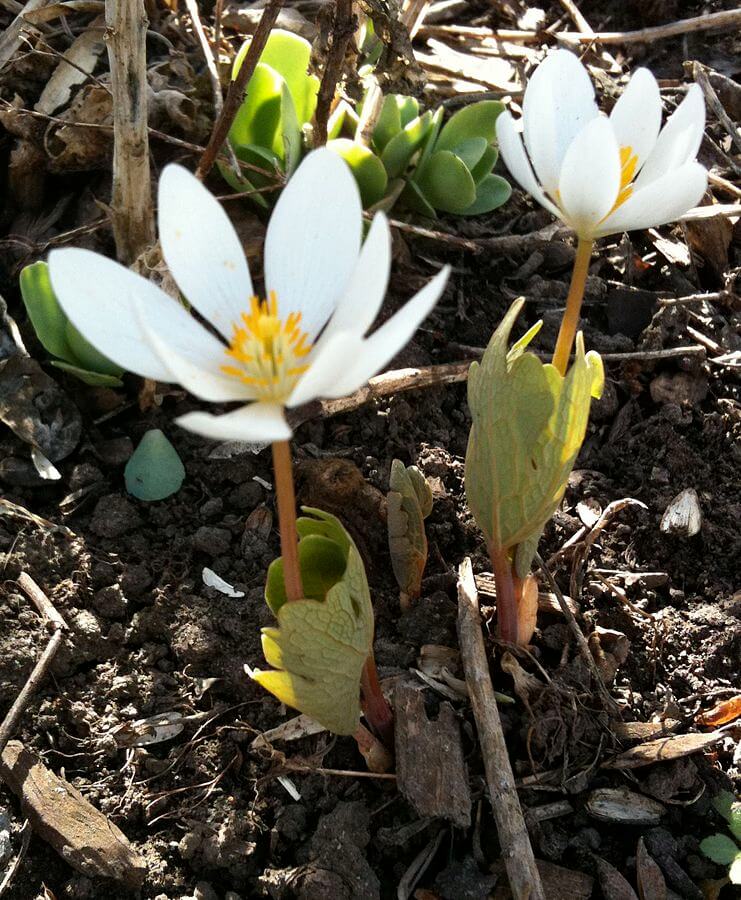
Rain and snow melt make spring garden soil preparation a challenge every year, but once you can get into the garden, get into your soil! Feeding your garden soil in spring is an investment that pays off every time. Amending, turning, tilling, fertilizing, and mulching are the five practices needed to make your garden great all season! The addition of drip hoses for easy irrigation can make garden care even more effortless.
 Amending Garden Soil
Amending Garden Soil
Rich soil yields better crops, so it pays to feed your soil. Adding the best amendments will ensure your soil is ready to work. Adding lots of compost will increase good yields, but be sure that your compost is good quality. Fafard Premium Natural & Organic Compost is a high-performing compost sure to give your garden what it needs. For areas where you intend to plant greens, go with nitrogen-rich amendments, such as Fafard Garden Manure Blend.
Turning Garden Soil
“No till” areas in the vegetable garden need different care. These include beds with perennial and winter crops, like areas with asparagus, garlic, strawberries, or hardy herbs, as well as well-amended spots that are already in good shape below ground. Still, adding extra organic matter to no-till spots will ensure better growth while allowing for the addition of needed amendments. Adding a layer of compost and lightly turning it into the surface will increase organic matter while not disrupting your plants or soil structure.
Tilling Garden Soil

Many gardeners have bed areas that are tilled yearly. This has its pluses and minuses. Tilling brings the bank of weed seeds to the surface and disrupts soil structure and organisms, but it also increases tilth and allows organic matter to be worked deeply in the soil. If you plan to till, plan to double your amendment by adding a till-in layer and a mulch layer. First, put down a thick layer of compost or manure and till it deeply into the soil, then rake and berm bed spaces as needed. Finally add a second layer of compost to further enrich the soil and protect against weeds. The second step is extra important because tilling brings lots of weed seeds to the soil’s surface.
Fertilizing Garden Soil
Many vegetables require lots of food to produce good yields through the season. It’s essential to feed the garden well from the beginning with a good tomato & vegetable fertilizer. OMRI Listed fertilizers approved for organic gardening are best. Simply broadcast the fertilizer and gently work it into the top layers of soil where it’s needed most. Heavy feeders, such as tomatoes, peppers, and melons, should be fed again at planting time.
Mulching Garden Soil
In addition to adding a compost mulch layer, I protect and define walkways with leaf mulch, straw or hay, and grass clippings. These natural mulches stop weeds and make it easier to traverse the garden in wet, muddy weather. They also hold water and keep root zones cool on hot summer days. By fall’s end, they have usually broken down into accessible organic matter.
Living mulches are another option. Planting a dense summer cover crop in walkways, like white clover, will keep them tidy, cool, and mud-free while also feeding the soil. Just be sure to keep the edges trimmed and turn plants under in fall.
Amendment Application Formula
When adding amendments, determine how many inches you want to add over your garden area. Here is the simple formula needed to determine this:
([area to cover] ft2 x [depth in inches desired] x 0.0031 = ___ yd3).
Example: If you wanted to cover a 20 square foot area with 2 inches of compost, the result would be: 20 ft2 x 2 inches of compost x 0.0031 = 2.48 yd3.

Irrigation
For added benefit, consider snaking a drip hose beneath mulch layers to make summer watering easier and more efficient. Below-the-surface watering keeps water at root zones while virtually stopping surface evaporation on hot days. The key is marking your drip lines from above (to keep from accidentally cutting the line with gardening tools) and securing nozzles for easy access. At watering time, just hook up your lines and let them drip for an hour or so to ensure deep watering.
Once the vegetable season takes off, your garden will be in good shape with these five steps. Sure, weeds, drought, and hot days will come, but their impacts will be minimized and your time and garden’s productivity will be maximized.






































